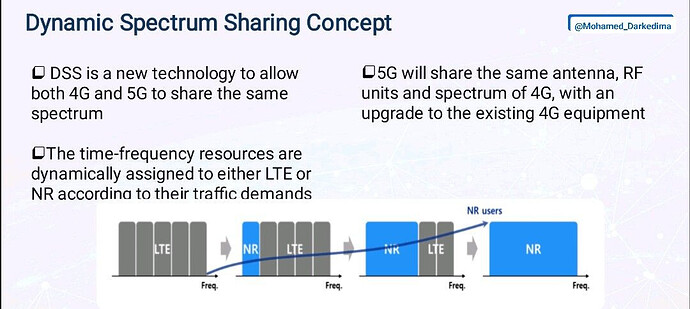- What is 4G 5G spectrum sharing?
4G 5G spectrum sharing is the concept of allowing both 4G and 5G wireless networks to use the same spectrum bands. This means that service providers can use their existing 4G spectrum to support 5G services, without having to acquire additional spectrum licenses.
- How does 4G 5G spectrum sharing work?
There are several techniques that can be used to enable 4G 5G spectrum sharing, including dynamic spectrum sharing (DSS) and carrier aggregation.
- Dynamic Spectrum Sharing (DSS):
DSS is a technology that allows a wireless network to dynamically allocate spectrum resources between different generations of technology, such as 4G and 5G. With DSS, a wireless network can use the same spectrum bands for both 4G and 5G services, and dynamically allocate resources based on demand. This means that when there is low demand for 5G services, the network can allocate more spectrum resources to 4G services, and vice versa.
- Carrier Aggregation:
Carrier aggregation is another technique that can be used to enable 4G 5G spectrum sharing. With carrier aggregation, a wireless network can combine multiple frequency bands to increase the amount of available spectrum. This can be used to support both 4G and 5G services simultaneously, with each service using a different subset of the available spectrum.
-
Benefits of 4G 5G spectrum sharing:
-
Improved spectrum utilization: 4G 5G spectrum sharing allows service providers to make better use of their available spectrum, without having to acquire additional licenses.
-
Smooth transition to 5G: By using existing 4G spectrum to support 5G services, service providers can make a smoother transition to 5G, without having to deploy a completely new network.
-
Cost savings: By avoiding the need to acquire additional spectrum licenses, service providers can save on capital expenditures and operational expenses.
-
4G 5G spectrum sharing is a promising concept that can help service providers maximize their available spectrum and make a smoother transition to 5G. By using dynamic spectrum sharing and carrier aggregation techniques, service providers can support both 4G and 5G services using the same spectrum bands, resulting in improved spectrum utilization and cost savings.
-
Credits: ![]()
